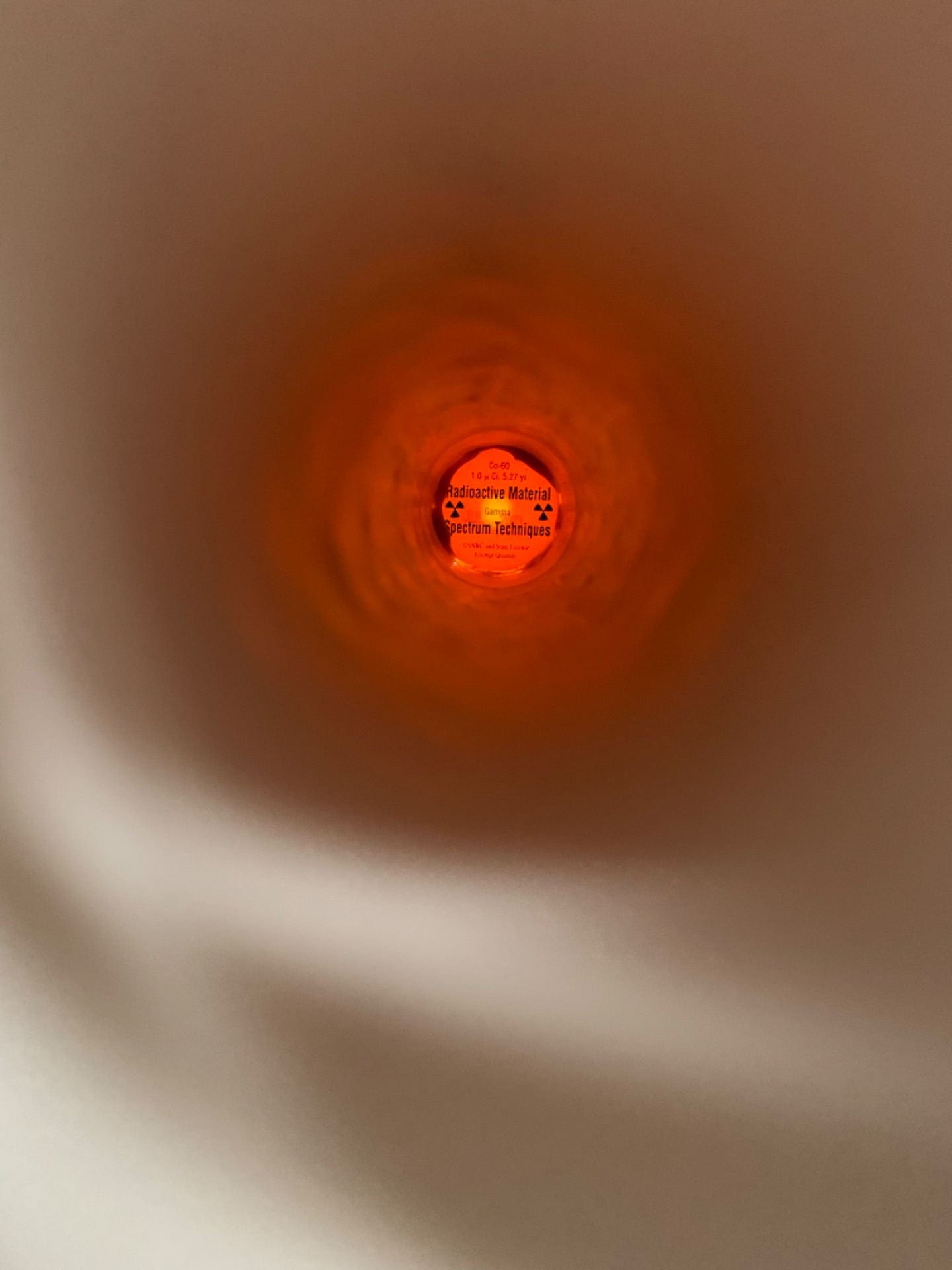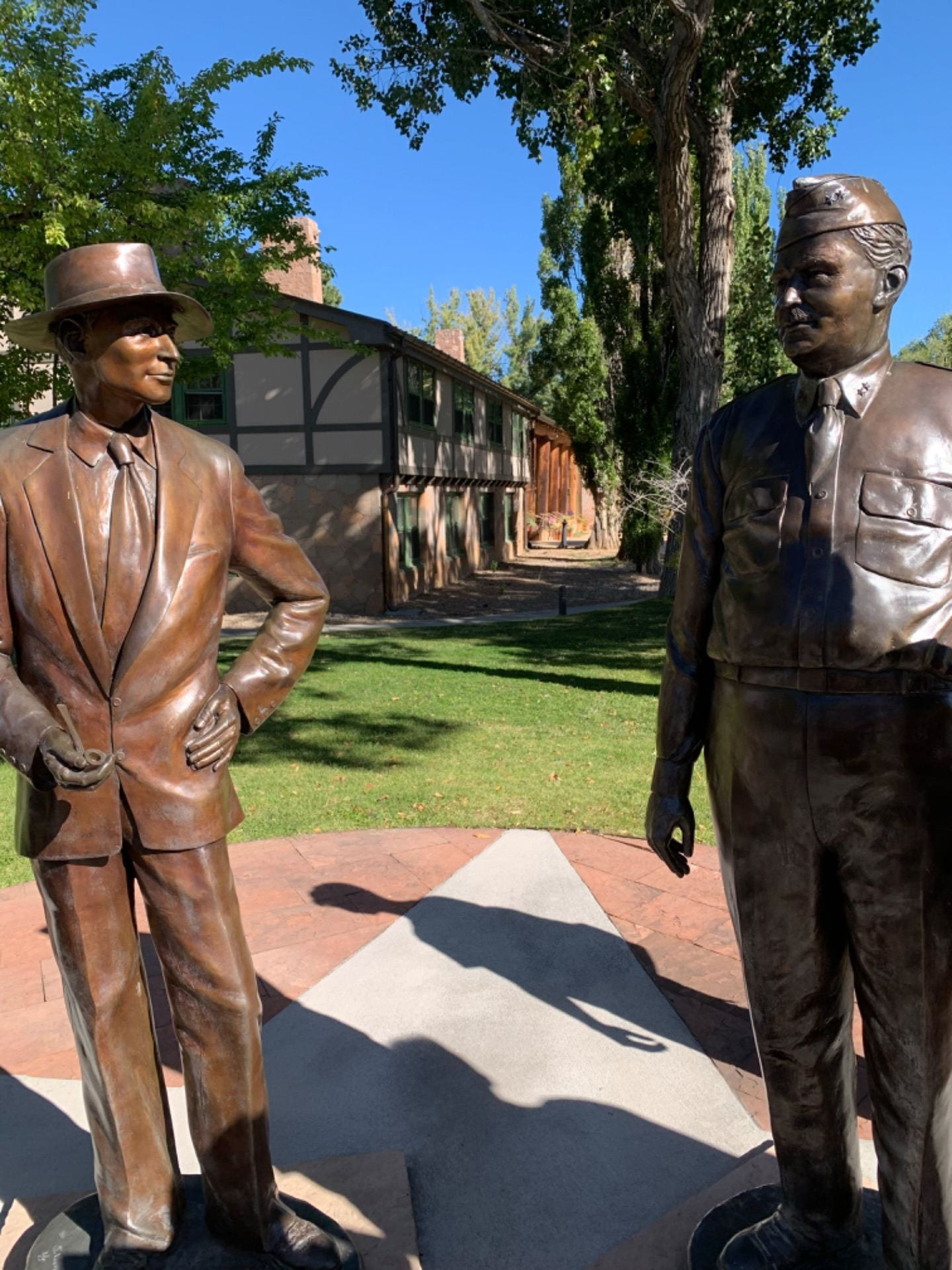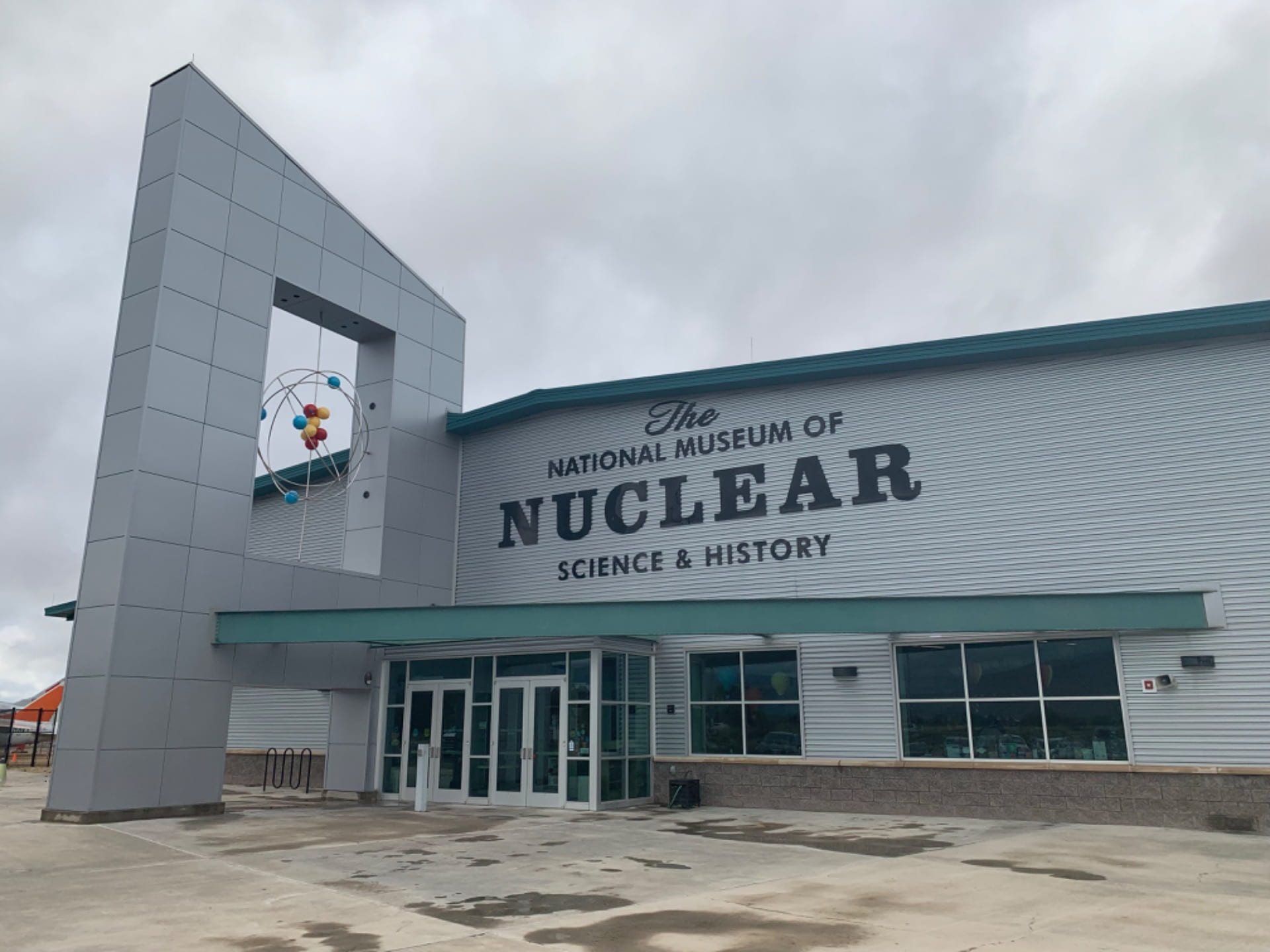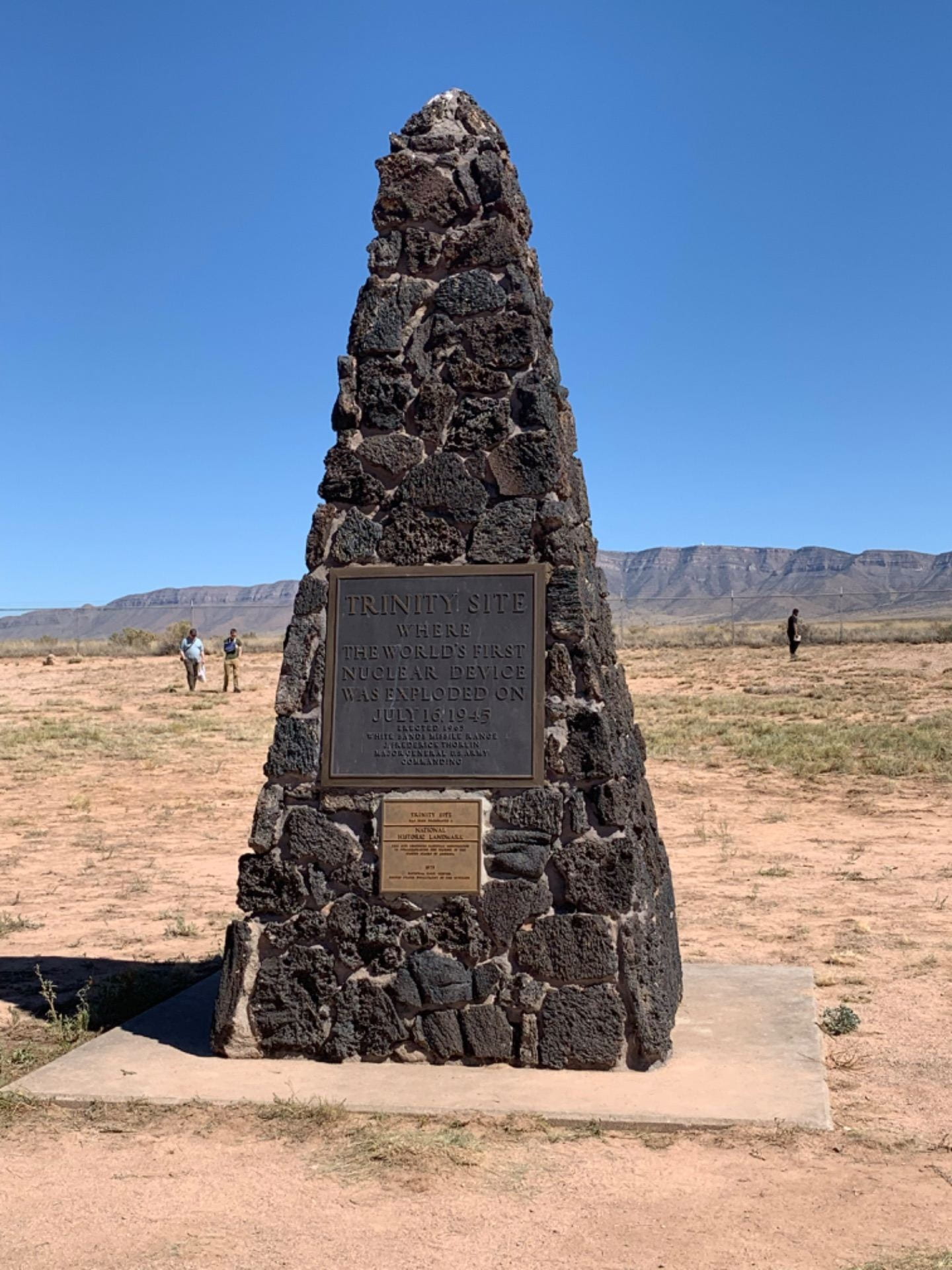One thing I don’t think people talk about enough is the fact that there is a huge cultural difference between the different parts of the United States of America. It’s not that surprising, but actually experiencing it is a whole other thing. Before this trip, I had only been to the west coast of the United States, which is similar enough with culture to Canada’s west coast. This trip was something truly different.
First of all, I had no idea where New Mexico is. No idea. I knew it was kinda south, but I definitely couldn’t have pointed it out on a map.
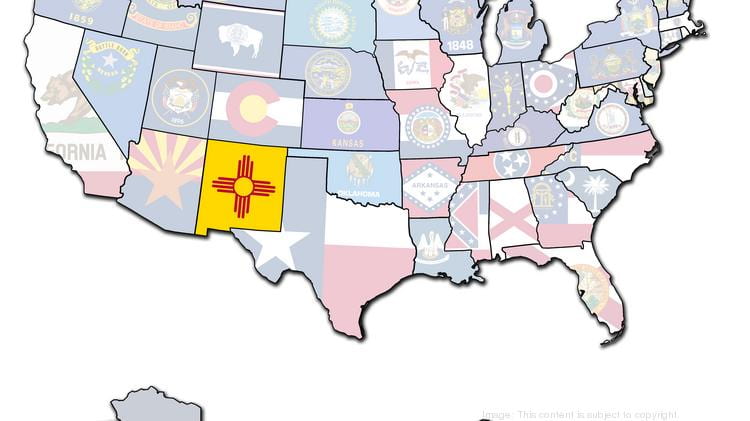
The trip was the destination for this project, but before we went, we had to learn about where we were going. I can honestly tell you this is the most informed I’ve ever been on a trip.
This project kicked off in the middle of summer vacation, I kid you not. We were assigned summer readings. Our class had one book to read, and I quickly made the connection between the book and the New Mexico Field School. Knowing this, I was enticed to read the book, to get a head start on the new school year. It was difficult at times, because the book, Age of Radiance by Craig Nelson, had some very scientific knowledge that I did not have. At times it was hard to follow, but making notes helped a lot.
Reading the book, though confusing at times, was hugely helpful in understanding what we were going to be doing on the trip, and in the learning before hand. I had that insiders knowledge, and I think that made the trip, and the project, the success that it was. If I were to go back and do it again, I think I would try and do more research while I was reading the book, and have a better understanding of each thing they talked about.
The next ‘milestone’-ey thing that I thought was really helpful, or interesting, was the Manhattan Project Character Card. This is something that the teachers had very strict guidelines for. They were also not present while we were doing this milestone, which made things, well, interesting.
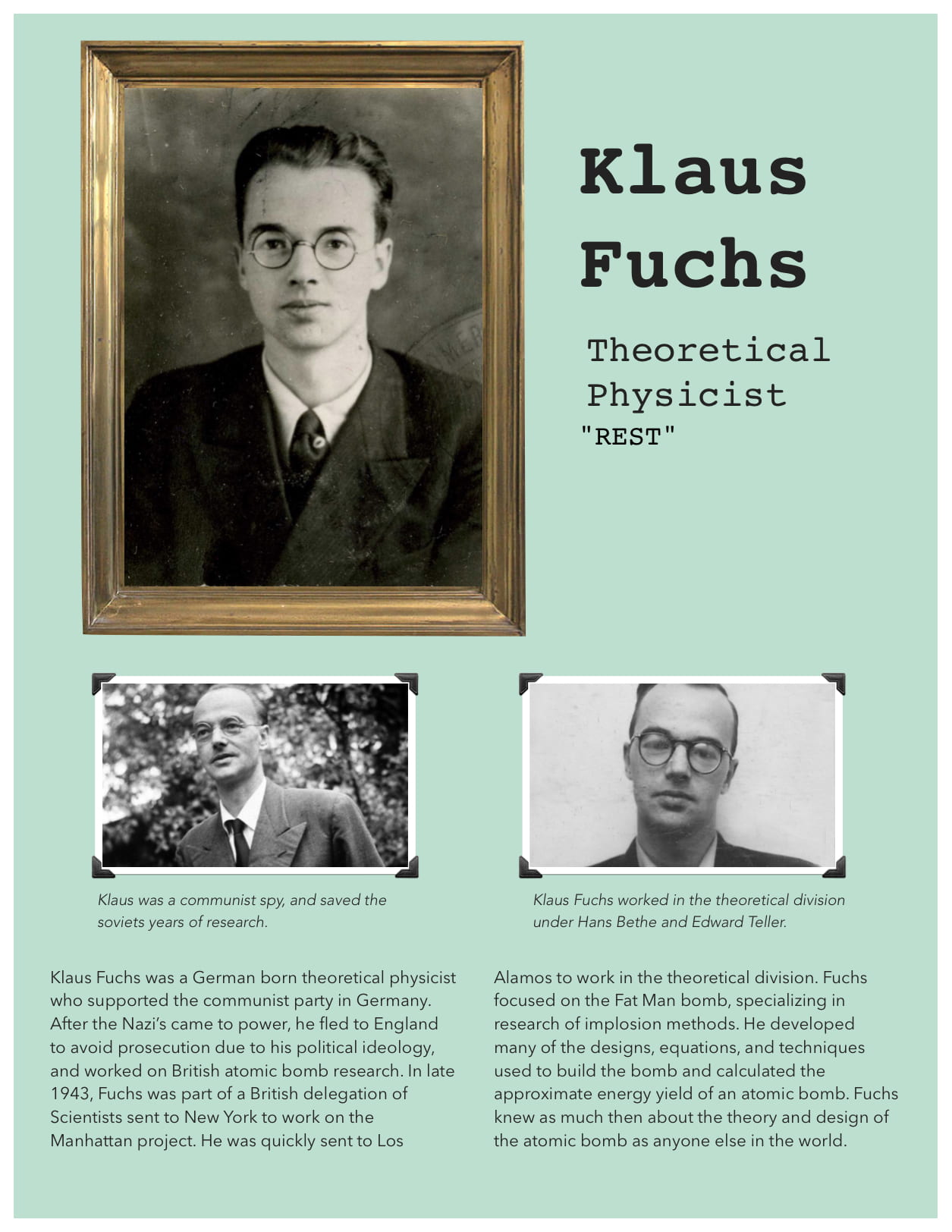
Us, as a class, had to pick the 16 most significant people to the Manhattan project, and each person in the class was assigned one of these people to make a ‘character card’. Except it wasn’t make, it was fill in a very restrictive template. Some people fought this more than others. I thought having a template pre-made would make things easier, but it didn’t. The template had a very small area for us to explain who the person was, what they did, and why they were significant. It’s that word again. Significant. This is what the entire project was on.
How did the development of the atomic bomb change the world in a historically significant way?
This milestone helped us have a better understanding of the driving question, stated above. Why were these people significant, and why were they more significant than someone else. My person, Klaus Fuchs, had a very interesting story, which you can read all about on the card!
Now, we come to the final product for the trip, our books. In grade 8, and grade 9, for field schools, our teachers made book templates in book creator for us to fill out during the trip. They had photos, videos, audio clips and text. Our job was to make a book that answers the driving question, using the trip to gather evidence.
At first, I thought I had a good idea. I was going to follow a theme inspired by —. It seemed like a good plan, and was commended by the teachers. Once I did it though, I was not pleased. I had all the content I wanted, the information was, I thought, pretty solid. I just HATED how it looked. It was awful.
It took me a while, but with help from my friends, I scrapped that entire theme and started again. I kept the content, which took a while to collect and I was very proud of, but I changed everything else. Also remember, this was during the trip, at the airport. I have a post all about how I used efficiently, but that’s not the point. I realized that I could do another theme, which I am very pleased with.
I’m very happy with my book. If I were to go back, I would definitely have done the newspaper theme the first go around, but it worked out just the same. I think the time I put into it really shows. Something about this really sparked my interest, so I wanted to do a good job. There were maybe more opportunities for long and well edited videos, but I did my best to capture everything I needed, and was flexible with my ideas.
And now, drumroll please,
This was probably the coolest field school I’ve ever been on. We had long days, jam packed with learning and other things, but it was amazing. I also got a lot of patches, which is some good I collect and am really happy about!
As I said, this trip was packed full of crazy stuff. So I’m just going to talk about a couple places we went to, the ones that I think best describe our trip.
Los Alamos Historic Sites Walking Tour
This was the first stop on our trip. And honestly? It really was a great first introduction to New Mexico, and The Manhattan Project. Our guide, Aimee Slaughter, was amazingly knowledgeable about, not just the Manhattan Project, but of the history of the area. She told us about the Pueblo people, the First Nations who lived in Los Alamos before the Manhattan project, and how they all tied together. She told us a really cool story about someone who lived on the land before, worked in the town, and has relatives there today. That story is in my book.
National Museum of Nuclear Science and History
One thing about learning about radiation is that it’s kinda scary. It’s this awesome power that can blow up cities, but it’s also everywhere. We did an amazing workshop with David Gibson about radioactivity. We got to use geiger counters and everything. I thought it was cool to know that radiation is everywhere, because atoms are constantly decaying and letting off radiation, but that doesn’t hurt you. It’s called background radiation!
Meow Wolf
There are no words for this. It’s like a trip of hallucinogenic drugs, but you are definitely not on drugs. There are secret passageways, slides through washing machines, portals with doors that open with hand prints, like honestly, you kinda have to go there. You could spend hours exploring that place.
Trinity
On July 16th, 1945, the first ever atomic bomb was dropped in the middle of the New Mexico desert. This one event completely changed the world, ushering in a new age of science, technology, warfare, and so much more. We got to go there. Where it all happened. It was so cool. Jesse and I spent a while conducting interviews of people, just regular people, to see why they were there. Everyone had their own reasons, but the core message was the same. This is where it happened. This is where the course of the war changed. This is where the world changed.
This was an amazing trip. We’re not that far away, and yet, there are so many differences between our culture, and the New Mexico culture. Though we have different food, and different ideas, there’s one thing we can all agree on. There was a time before the bomb was dropped, and a time after.














